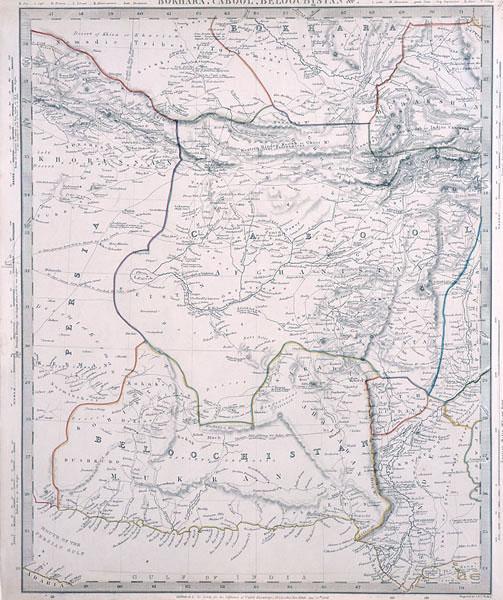Many
in the media seem to have just realized that there is
an armed Shi`i movement in
Yemen, and that only after Zaydi Hawthi troops control the capital.
And many “analysts”
are seeing the Zaydi return
to power in Yemen as an unmitigated disaster, as well as a chance to
score political points against
President Obama. The
latest historical manifestation of Zaydi resurgence may have positive
benefits, however, based
on the following analysis. http://www.mahdiwatch.org/2015.01.01_arch.html#1422048024813
The sand is always greener, where the Sunni ranks are leaner.
There are clear splits among the
Zaydis about how closely to emulate Iran and its Shi`I, albeit Twelver, government. `Issam
al-`Imad, a Zaydi cleric
who is said to have studied in Qom, now has the zeal of the Shi`i
convert and pushes a united Fiver-Twelver
front in Yemen. He claims
that the Zaydi libraries in Sa`dah nowadays are stocked with Twelver
Shi`i tomes, printed in Qom,
and that the Iranian
Twelver influence is great.
He
also suggests that Husayn Badr al-Din al-Hawthi
might be occulted, not
dead, and that that Badr al-Din was not only close to Hasan Nasrallah,
head of Lebanese Hizbullah,
but a virtual disciple of
Ayatollah Khomeini (founder of the Islamic Republic of Iran). But
not
all Zaydi clerics agree
with al-`Imad: one Muhammad Abd al-Azim al-Hawthi says that the Hawthi
rebels are “apostates”
and not even Zaydis.
Despite
such inter-Zaydi feuding, increasingly the battles in
Yemen are between the Shi`i
Zaydis and the Sunni jihadists of AQAP, directly. At the same time,
The Zaydi conflict has
increasingly spread across
the rather ill-defined border from Yemen into KSA, even as Riyadh has
had to deal with demands
from Twelver and Sevener
Shi`is in other areas of the Saudi realm. Riyadh has a number of
reasons to be concerned about
the Zaydis of Yemen:
control over the roads between Sa`ada and Riyadh; growing Shi`a
influence, or Shi`is themselves
(refugees), on its
territory; Iranian exploitation of any and all Shi`is in the Peninsula;
and KSA has been experiencing
its own outbreak of
eschatological fervor, with “lone wolf” mahdis cropping up a number of
times in recent
years.
Several
years ago, the Saudi
paper “al-Watan” was
reporting that Iran had been shipping arms to the Zaydi Hawthis, and
training Hawthis at
Quds Force camps in
Eritrea, just across the Red Sea. Why would Iran be so brazen?
Reasons for Iran to stir the Shi`I pot in Arabia:
1. Leveraging “persecution” of Shi`is into regional geopolitical influence for Tehran-Qom
2. Appealing
to, and exploiting, historical connections with Shi`is of Yemen and greater Arabia
3. Undermining and de-legitimizing the Saudi
government
4. Strengthening
its strategic position on both sides of the Red Sea
5. Strengthening its anti-Israel Islamic front
6. Searching
for allies wherever they can be found.
Current
Zaydi calls for the reestablishment of the Imamate, as well as
cooperation with
Iran, seem largely to be a
result of their disenfranchisement by Sunni authorities in Sana`a, and
their perception of being
trapped between the anvil
of the Saudi Wahhabis to the north and the ever-encroaching hammer of
AQAP from the south.
Conventional
wisdom right now has it
that Yemen’s “Hero Imamate” is being used by the Iranian ayatollahs’
“Martyr
Imamate.” But perhaps it
is the other way around. The Zaydis have a historical legacy of ruling
much of
the country, and they do
have legitimate complaints about Sunni repression. Had the US put any
pressure on the Sana`a
rulers to acknowledge
Hawthi-Zaydi grievances in recent years, they may not have been
receptive to Iranian Shi`i blandishments.
But that Imam has left the
well. Now the US needs to find a way to prevent Yemen from fracturing
while simultaneously
giving the Zaydis their
historical and political due. Maybe, in the process, we can take
advantage of the Zaydi hatred
of AQAP. And perhaps a
bit of pressure on the Wahhabi fundamentalists in Riyadh and their new
King, Salman, could
be a good thing, as well.









































No comments:
Post a Comment